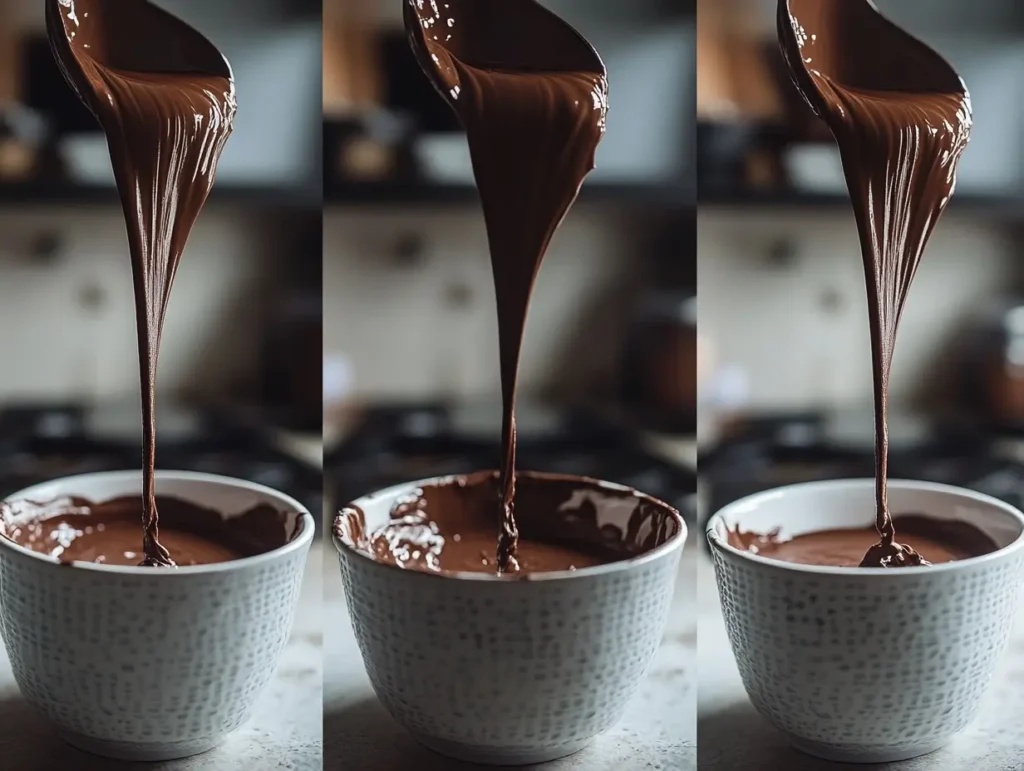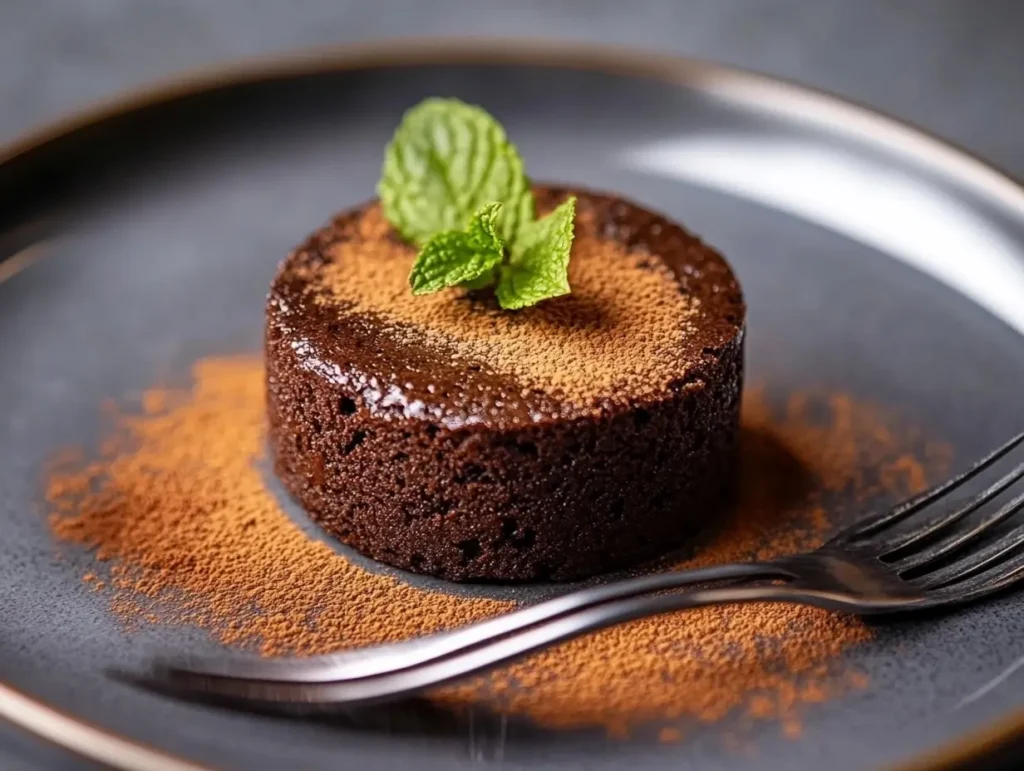Chocolate desserts are a treat for the senses, but let’s face it—things don’t always go as planned. From melted messes to grainy textures, even seasoned bakers encounter challenges. But fret not! This guide will walk you through the art of troubleshooting your chocolate dessert mishaps. Whether your ganache split, your mousse lacks fluff, or your brownies are overly sweet, we’ll help you fix it all with ease.
Table of Contents
Understanding the Art of Fixing Chocolate Desserts
What Does It Mean to Fix Dessert Chocolate?
Fixing dessert chocolate is all about troubleshooting and refining. Whether it’s correcting a mistake during preparation or improving an underwhelming dessert, the goal is to create a product that’s visually appealing, delicious, and satisfying. Chocolate, with its temperamental nature, can be challenging to work with. However, armed with the right techniques and tools, any chocolate dessert can go from flop to fabulous.
Common Chocolate Dessert Issues and How to Spot Them
Many dessert mishaps stem from simple mistakes or misunderstandings. Here are a few typical problems to watch out for:
- Chocolate Seizing: If your melted chocolate turns grainy or clumpy, it’s likely seized due to water contact.
- Grainy Ganache: A poorly emulsified ganache often ends up with a gritty texture, making it unpleasant to eat.
- Bloom on Chocolate: A white, powdery layer on your chocolate signals either fat or sugar bloom—both caused by temperature fluctuations.
- Overpowering Sweetness: Overly sweet desserts can overwhelm the palate, detracting from the chocolate’s richness.
Spotting these issues early can save you time, effort, and disappointment.
Why Chocolate Quality Matters in Desserts
When it comes to chocolate desserts, the quality of your chocolate makes all the difference. High-quality chocolate offers:
- Better Flavor Profiles: Premium chocolates balance sweetness with nuanced notes like nuttiness, fruitiness, or bitterness.
- Improved Workability: Quality chocolate melts, tempers, and sets more predictably than its cheaper counterparts.
- Enhanced Aesthetics: Superior chocolate creates shinier finishes and richer textures.
Always opt for chocolates with at least 60-70% cocoa for desserts. Avoid compounds or chocolates with excessive additives—they compromise flavor and performance. Remember, great desserts start with great ingredients.
Top Chocolate Dessert Problems and Their Solutions
Problem 1: Chocolate Seizing During Melting
Chocolate seizing is one of the most common issues when working with chocolate. It happens when even a tiny amount of water comes into contact with your chocolate, causing it to clump and harden.
- Why It Happens: Chocolate contains sugars and fats that bind together when exposed to moisture, forming a gritty paste instead of a smooth melt.
- Step-by-Step Fix:
- Remove the chocolate from the heat immediately.
- Gradually add a tablespoon of warm milk or cream, stirring vigorously to bring the mixture back to a smooth consistency.
- Use the restored chocolate for ganache or sauces rather than molding or tempering.
Pro Tip: Always keep your equipment dry when melting chocolate to avoid seizing altogether.
Problem 2: Grainy Texture in Chocolate Desserts
Graininess in desserts like mousse or ganache can ruin the texture. It typically occurs due to improper emulsification or overheating.
- Causes of Texture Issues: Overheating chocolate during melting or failing to combine it correctly with liquids can lead to separation.
- Tips to Avoid Graininess:
- Melt chocolate gently using a double boiler or microwave in short bursts, stirring between intervals.
- Ensure liquids added to chocolate are warm and gradually incorporated.
Problem 3: Chocolate Blooming (White Film on Chocolate)
Seeing a white, powdery film on your chocolate? That’s blooming, caused by either fat or sugar separating from the cocoa.
- What Is Chocolate Bloom?:
- Fat Bloom: Occurs when chocolate is stored in fluctuating temperatures, causing cocoa butter to rise to the surface.
- Sugar Bloom: Happens when chocolate is exposed to moisture, dissolving sugar crystals that later recrystallize on the surface.
- Techniques to Fix and Prevent It:
- To fix blooming, remelt and temper the chocolate.
- Prevent it by storing chocolate in a cool, dry place, ideally between 55-65°F.
Problem 4: Overly Sweet Chocolate Desserts
An excessively sweet chocolate dessert can overpower the palate, masking the nuanced flavors of the chocolate.
- Balancing Flavors: Pair sweet desserts with acidic elements like berries or a sprinkle of sea salt to enhance the complexity.
- Using Dark Chocolate and Alternatives: Substitute dark chocolate for a portion of milk chocolate in recipes to reduce sweetness while intensifying the chocolate flavor.
Essential Tools and Ingredients for Perfect Chocolate Desserts

Must-Have Tools for Chocolate Preparation
Having the right tools can make or break your chocolate dessert success. Here’s what you need:
- Double Boiler: Prevents direct heat and ensures gentle, even melting.
- Silicone Spatula: Perfect for scraping bowls and folding ingredients without scratching surfaces.
- Digital Thermometer: Essential for tempering chocolate and achieving precise temperatures.
- Fine Mesh Sieve: Helps remove any lumps from cocoa powder or dry ingredients.
Selecting the Right Type of Chocolate for Your Recipe
Not all chocolate is created equal. Here’s how to choose:
- Dark Chocolate (60-70% cocoa): Ideal for rich desserts like brownies and ganache.
- Milk Chocolate (30-50% cocoa): Best for sweeter treats like chocolate chips or mousse.
- White Chocolate: Works well in creamy, delicate recipes but can be temperamental due to its high fat content.
Look for chocolate with minimal additives to ensure quality and flavor.
The Role of Fresh Ingredients in Chocolate Desserts
Beyond chocolate, fresh and high-quality ingredients elevate your dessert:
- Dairy: Use fresh cream and butter to create a smooth, velvety texture in recipes.
- Flour: Opt for unbleached, finely milled flour for baked desserts like cakes or cookies.
- Fruits: Fresh berries, citrus zest, or purees add vibrant flavors and balance the richness of chocolate.
Internal Linking Opportunity:
For an in-depth exploration of techniques like pairing flavors and working with chocolate, check out the Ultimate Guide to Milky Cocoa. It’s packed with tips for achieving smooth, luscious textures in chocolate-based drinks and desserts.
Recipes That Fix Common Dessert Chocolate Issues
Recipe 1: Silky Chocolate Ganache – Say Goodbye to Graininess
When your ganache turns out grainy, this foolproof recipe will save the day. Ganache is a versatile base for truffles, glazes, or cake fillings, but it demands precise emulsification.
Ingredients:
- 8 ounces dark chocolate (finely chopped)
- 1 cup heavy cream
- 1 tablespoon unsalted butter (optional, for added sheen)
Instructions:
- Heat the heavy cream in a small saucepan over medium heat until it just begins to simmer. Avoid boiling!
- Pour the hot cream over the chopped chocolate in a heatproof bowl. Let it sit for 2-3 minutes to melt the chocolate.
- Gently whisk until the mixture becomes silky smooth. If it looks grainy, add 1 tablespoon of warm milk or cream, and whisk again.
- For a glossy finish, stir in the butter until fully incorporated.
This recipe is a fail-safe way to fix dessert chocolate mishaps, ensuring a creamy, indulgent texture every time.
Recipe 2: Perfect Chocolate Mousse – Balancing Sweetness
Chocolate mousse is a classic dessert, but getting the right sweetness can be tricky. This recipe balances the richness of chocolate with a touch of tanginess.
Ingredients:
- 6 ounces bittersweet chocolate (70% cocoa)
- 3 large eggs, separated
- 1/3 cup granulated sugar
- 1 cup heavy cream
- 1 teaspoon vanilla extract
Instructions:
- Melt the chocolate using a double boiler or in the microwave, stirring until smooth. Let it cool slightly.
- Whisk the egg yolks with sugar and vanilla until pale and creamy. Fold in the melted chocolate.
- Beat the egg whites to stiff peaks and fold them into the chocolate mixture.
- Whip the cream to soft peaks and gently fold it in last. Chill for at least 2 hours before serving.
This mousse showcases how using less sugar and quality chocolate can enhance the overall flavor.
Recipe 3: Fudgy Brownies with a Glossy Top
Want that iconic crackly top? These brownies are your answer. They also address issues like overly sweet or dry textures.
Ingredients:
- 8 ounces dark chocolate
- 1/2 cup unsalted butter
- 1 cup sugar
- 2 large eggs
- 1/2 cup all-purpose flour
- 1/4 teaspoon salt
Instructions:
- Melt the chocolate and butter together in a saucepan over low heat. Set aside to cool.
- Whisk the sugar and eggs until pale and frothy. This step is key for achieving a glossy top.
- Gently fold in the melted chocolate, then the dry ingredients.
- Bake in a preheated 350°F oven for 25-30 minutes.
Recipe 4: Easy Chocolate Fondue
This recipe is great for fixing seized chocolate by transforming it into a rich, dippable fondue.
Ingredients:
- 12 ounces semisweet chocolate
- 1 cup heavy cream
- 1 tablespoon liqueur (optional)
Instructions:
- Heat the cream until warm, then pour over chopped chocolate. Let sit for 2 minutes.
- Stir until smooth and add liqueur for extra flavor. Serve with fresh fruits, marshmallows, or cookies for dipping.
Expert Tips for Chocolate Dessert Success
Working with Tempered Chocolate
Tempered chocolate adds a professional touch to desserts, but it can be intimidating. Follow these tips for success:
- Always Use a Thermometer: Precision matters. Temper dark chocolate to 88-90°F, milk chocolate to 84-86°F, and white chocolate to 80-82°F.
- Seed Method: Melt two-thirds of your chocolate, then add the remaining third, stirring constantly to cool and temper the mixture.
This method ensures glossy, snap-worthy chocolate for decorations or coatings.
Storing Chocolate Properly to Avoid Bloom
Improper storage often leads to chocolate blooming. Keep your chocolate in an airtight container in a cool, dark place—away from moisture and temperature fluctuations. If bloom occurs, remelting and tempering the chocolate can restore its appearance.
Pairing Chocolate with Other Ingredients
To balance the richness of chocolate, pair it with complementary flavors:
- Fruits: Citrus zest or berries provide tanginess.
- Spices: A dash of cinnamon or chili adds depth.
- Salty Components: Sea salt or nuts create a pleasing contrast.
For dessert inspiration, explore the recipes and tips available at All You Recipes.
Frequently Asked Questions (FAQs)
Why Does My Chocolate Harden When I Melt It?
This is a classic case of chocolate seizing. It happens when even a small amount of water comes into contact with your melting chocolate. The sugar in the chocolate absorbs the moisture, forming clumps and ruining the smooth texture.
To fix this problem, add a tablespoon of warm cream or milk and stir vigorously until the mixture smooths out. Always use dry utensils and bowls to prevent water from causing this issue in the first place.
How Can I Balance Sweetness in Chocolate Desserts?
Overly sweet desserts can overpower the nuanced flavors of chocolate. To strike the right balance:
- Use dark chocolate with at least 60% cocoa content for a deeper flavor.
- Pair your dessert with tangy ingredients like citrus zest or tart berries to cut through the sweetness.
- Add a pinch of sea salt to enhance the chocolate’s complexity.
These simple tweaks can help you fix dessert chocolate to achieve a well-rounded taste.
What’s the Best Chocolate for Baking?
The type of chocolate you choose depends on the dessert you’re making. For baking, dark chocolate with high cocoa content is ideal because it melts evenly and offers rich flavor. For recipes requiring subtle sweetness, milk or white chocolate works well.
Always avoid compound chocolates as they lack the authentic cocoa butter found in quality options. If you’re unsure, look for brands with minimal additives.
How Do I Prevent Chocolate from Burning During Melting?
Chocolate burns quickly when exposed to high heat. To avoid this:
- Melt it gently using a double boiler or microwave in short intervals, stirring frequently.
- Use low heat to ensure even melting without scorching.
Burnt chocolate can rarely be saved, so patience is key when melting.
Additional Tips and Resource

Expanding Your Chocolate Expertise
Learning to fix dessert chocolate is just the beginning. To truly master chocolate desserts, consider these tips:
- Experiment with Flavors: Try adding spices like cinnamon or cardamom to your recipes for a unique twist.
- Practice Tempering: Well-tempered chocolate creates a shiny finish and satisfying snap.
- Use Quality Ingredients: Fresh cream, premium cocoa powder, and pure extracts elevate your dessert’s overall quality.
Suggested Reads and Recipes
Explore related recipes and techniques on All You Recipes. Their article The Ultimate Guide to Milky Cocoa , is an excellent resource for working with chocolate and achieving smooth, luscious textures.
Whether you’re making a chocolate mousse or troubleshooting a seizing ganache, these resources will keep you inspired and informed.
Exploring Creative Chocolate Dessert Solution
Reinventing Leftover Chocolate
Got leftover chocolate from your dessert projects? Reinvent it into something new:
- Homemade Chocolate Bark: Melt the leftover chocolate, spread it thinly on parchment paper, and top with nuts, dried fruit, or sprinkles. Let it cool and break into pieces.
- Hot Chocolate Mix: Blend melted chocolate with cocoa powder, sugar, and milk powder to create a rich instant hot cocoa mix.
These ideas not only reduce waste but also showcase your creativity.
Combining Chocolate with Savory Ingredients
Chocolate isn’t just for sweets—it can shine in savory dishes too. Here’s how:
- Chili and Chocolate: Add a square of dark chocolate to chili for depth and richness.
- Balsamic Chocolate Sauce: Mix melted chocolate with balsamic vinegar to drizzle over roasted vegetables or meats.
Using these combinations helps expand your chocolate repertoire while improving your ability to fix dessert chocolate in innovative ways.
Conclusion
Mastering the art of chocolate desserts may seem daunting, but with the right techniques and a bit of practice, it becomes an exciting and rewarding journey. Whether you’re learning to fix dessert chocolate issues like seizing or bloom, perfecting ganache, or experimenting with creative recipes, each step helps you grow as a dessert artisan. Remember, high-quality ingredients and patience are your best tools. So, dive in, try new ideas, and let your love for chocolate inspire every creation. Your next masterpiece awaits!

